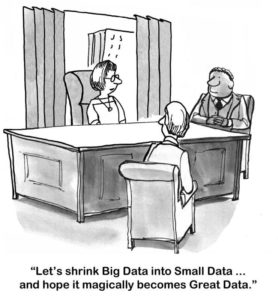Want to be famous? Desirous to be a ‘Guru’ ? Here is the way. Invent a ‘strategic management’ approach to save businesses from certain failure. Based on limited data, experience, and knowledge you ‘have all the answers’. Take a successful company – or 100 – and descriptively map back to their successes, your ‘theory’ as to how they achieved their results. Ignore the fact that many of them have, or will go bankrupt by the time Harvard Business Review publishe s your essay. This tautological approach will be called ‘scientific’ and will be hailed as management-science. To support your ‘science’ you must of course commit wondrous amounts of data fraud with illimitable quantities of fake examples.
s your essay. This tautological approach will be called ‘scientific’ and will be hailed as management-science. To support your ‘science’ you must of course commit wondrous amounts of data fraud with illimitable quantities of fake examples.
This helped make comedian Tom Peters and his McKinsey friends quite famous. Be sure to saturate your themes and clever checklists with hyperbole including meaningless parables such as ‘loose tight coupling’, ‘blue oceans of new opportunity’, or ‘inimitable asset development’. No one has any idea what these mean. This is precisely the point. To be a guru, you have to deceive and blather. Clarity and common-sense are the enemy. Obfuscation and trickery are the manna of the Gurus.
You will be hailed by the clever people as a thinker, an academic, a seer, a wizard of insight and profundity. Indeed, your work must often use the phrase ‘and this is an important insight….’ to highlight some deviously clever observation, such as ‘you need to make a better product’, ‘you 
should be nice to people’, or ‘clients are important’. These ground-breaking insights can of course be attained by following your helpful recipe, your framework, and your entertainment-value rhetoric. Pretty pictures, plenty of fraudulent data cascades, and of course the descriptive tautologies suffusing checklists, supported by ‘evidence’, which is selectively chosen to support your theology are de-rigeuer.
Welcome to the Guru-hood. Stay thirsty and corrupt my friends.

